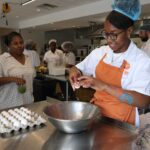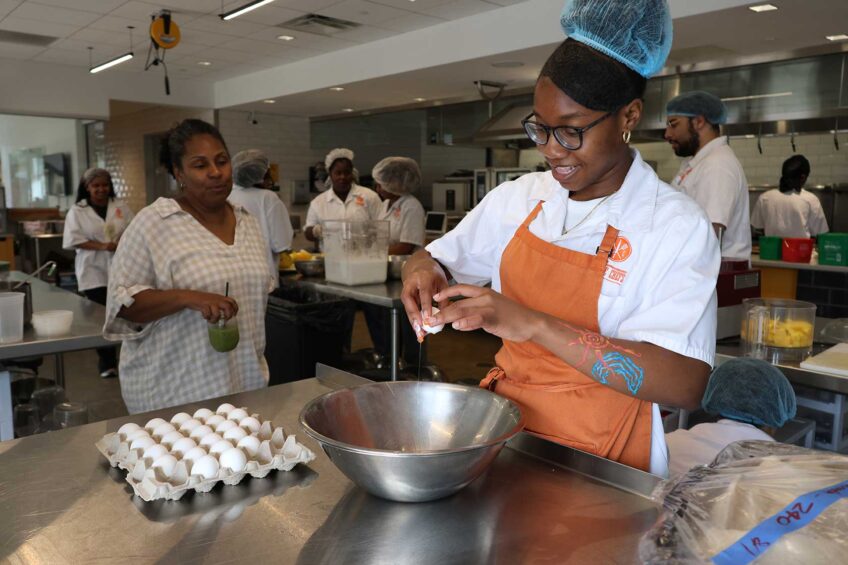
The cards are stacked against Boston Public Schools students seeking entrance to the city’s three exam schools, according to members of a coalition of civil rights and education groups calling for changes to the schools’ admissions criteria.
As a result, Boston Latin School, Boston Latin Academy and the John D. O’Bryant School together enroll a student population that is only 40 percent black and Latino in a city where those groups represent 70 percent of all public school students.
Coalition members held a public meeting at Roxbury Community College last Thursday, outlining their plans and listening to recommendations from community members.
“Families and children in Boston must have access to opportunity,” said Lawyers for Civil Rights Executive Director Ivan Espinoza Madrigal. “That’s what this is all about.”
Lawyers for Civil Rights, NAACP Boston, Massachusetts Advocates for Children and other groups working in collaboration held dozens of meetings with parents and other stakeholders across the city to discuss the exam school application process. Under the current system, entrance to the exam schools is based on a student’s grades and their score on the ISEE test, a test used for entrance to private schools that students must take at the start of sixth grade to be considered for entry to the exam schools.
“The ISEE is not aligned to the BPS curriculum, and tests subjects that aren’t taught in BPS schools,” noted Jose Lopez, chairman of the NAACP Boston Branch Education Committee.
Lopez said grade inflation in some private schools, along with the BPS system of awarding grades in a numbered system, also put BPS students at a disadvantage. At the Holy Name Catholic school in West Roxbury, 69 percent of students earned an A-plus average in 2016. That same year, 43 of the school’s graduating class of 51 students were accepted to Boston Latin School, making up more than 10 percent of the school’s 7th-grade class.
Overall, students from private and parochial schools account for 50 percent of the admissions to Boston Latin School.
Within Boston’s public schools, students from predominantly white neighborhoods such as Beacon Hill, the North End and West Roxbury account for the majority of admissions to Boston Latin School, which has a student body that is only 16 percent low-income, in contrast to the district-wide average of 59 percent.
Lisa Green, a North End parent of a Boston Latin School student, described a pervasive culture of private test preparation courses and coaches that parents in her neighborhood use to help their children gain admittance to the exam schools.
“I don’t know anyone who didn’t get into an exam school,” she said.
Additionally, parents at the predominantly white and higher-socioeconomic-status Eliot School, located in Green’s North End neighborhood, raised hundreds of thousands of dollars to help pay for extra teachers and test preparation classes.
When Green, a member of the group Downtown Progressives, attended a meeting with East Boston parents and asked how many were planning to apply for admission to exam schools, none raised their hands, she said.
“The parents in East Boston didn’t know exam schools exist,” she said.
For BPS students who do wish to apply, the ISEE isn’t the only hurdle.
The exam schools’ admissions process counts a BPS grade of 4 as the equivalent of an A plus. But for a student to receive a 4 in BPS schools, they must demonstrate that they’re a full grade level ahead.
The alternative admissions processes the coalition members are suggesting include scrapping the ISEE test in favor of the state’s MCAS exam; implementing a system in which a top percentage of graduates from each BPS elementary school is offered seats; and a hybrid system in which admission to the schools is determined by a wide array of factors including grades, exam scores, family economic status and other factors.
The top percentage idea is modeled after the system used by the University of Texas, which guarantees admission to the top 10 percent of graduating high school seniors from each of the state’s high schools. Lawyer for Civil Rights fellow Lauren Sampson said the system can work in tandem with other admissions processes, as is the case in Texas.







